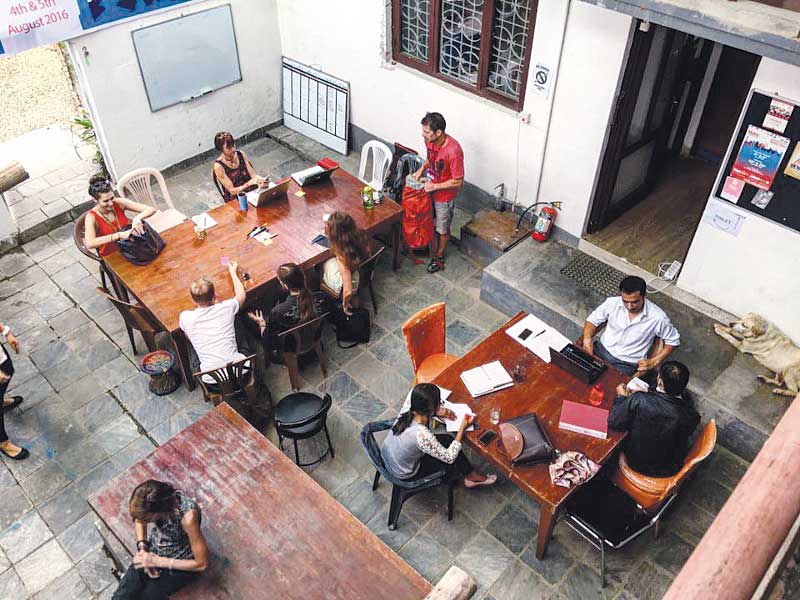The omnipresent yet overlooked grandeur of the stairway to the heavens
My first glimpse of Pashupatinath is similar to my first glimpse of my mother. I don’t remember either. I have always had both of them in my life. But I have been with both of them for much more than I can remember. The pagoda style architecture of most temples of the Kathmandu Valley is ubiquitous to us, something that is such an integral part of Kathmandu architecture that its grandeur escapes us sometimes.
 The tiered, pyramid-like structure overlapped amidst our houses is an representative element for a lot of temples in Kathmandu. Any stupa is known to have a dome-shaped structure and any temple artistic wooden tiers, linked to each other through a series of carved wooden or slender metal woods. These structures do not normally reach the sky or fill up Kathmandu’s skyline; but they were meant to.
The tiered, pyramid-like structure overlapped amidst our houses is an representative element for a lot of temples in Kathmandu. Any stupa is known to have a dome-shaped structure and any temple artistic wooden tiers, linked to each other through a series of carved wooden or slender metal woods. These structures do not normally reach the sky or fill up Kathmandu’s skyline; but they were meant to.
The Malla period is regarded as the “golden era” of Nepali art and architecture. The elements and structures introduced in the valley were brave and grand. When the valley was divided into three kingdoms - Kathmandu, Bhaktapur and Lalitpur, a sense of competition arose with rulers devoting much time, money and effort into creating some exquisite masterpieces. It might not have done more than lift the rulers’ egos then, but today these cities have some of the most splendid temples in the world. They were meant to be tall, single tiered in some cases but double or even five-tiered in others across the valley. The idea as speculated, was to make the temples’ access to heaven easier, for god!
Pagoda style structures are prominent in other Asian countries too such as Japan, Thailand, India, China and Korea.
The temples of Kathmandu - exquisitely carved bodies of immense national pride - are known for their architectural splendor. Images of animals, deities and mythical creatures adorn the walls and entrances of most temples here, but the pagoda structure always stands out.
One of the shining examples of this is the “five storied temple” of Nyatapola in Bhaktapur; a skyscraper of yore. The pagoda’s tiers give way to the magnificient spire, a heavily embedded, poiinted structure often painted in gold and regarded as religiously significant. Gajur ko darshan or a glance of the pinnacle is often enough while visiting a temple.
The influences of the architecture are obiovus in some of the older houses of the valley. None however are as grand as the old temples and palaces. The temples of Pashupatinath and Changunarayan, both built before the 5th century are the most popular examples of this style in Kathmandu.
A pagoda can have different meanings for different people. It was a structure of pride for the kings who designed them but probably a symbol of exhaustion to the workers who made them. To Kathmandu’s skyline, it is a matter of glory. To people who have loved and lived in Kathmandu, it spells home. ■











